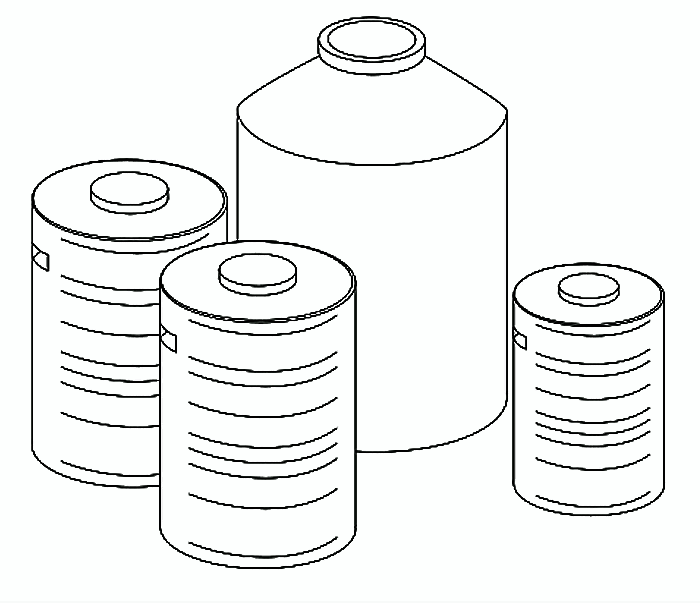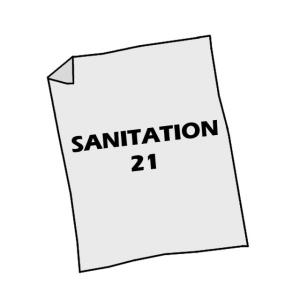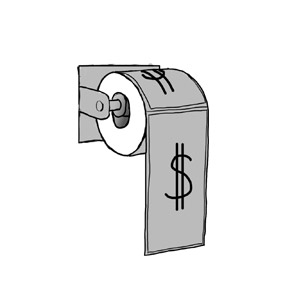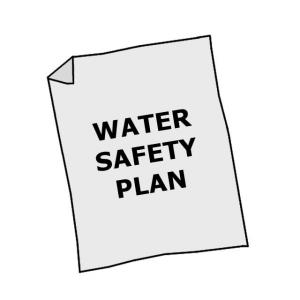Executive Summary
When urine cannot be used immediately or transported using a conveyance technology (i.e. jerrycans) it can be stored onsite in containers or tanks. The storage tank must then be moved or emptied into another container for transport.
| In | Out |
|---|---|
| Urine |
Stored Urine |
Introduction
The urine storage tank should be appropriately sized to accommodate the number of users and the time required to sanitise the urine. The storage guidelines for urine correspond to the temperature of storage and the intended crop for which it would be used as fertiliser, but all urine should be stored for at least 1 month before use (see WHO guidelines for specific storage and application guidelines). If a family’s urine is used to fertilise crops for their own household consumption only, it can be used directly without storage.
Smaller volume storage tanks can be used and transported to another centralised storage tank at, or close to, the point of use (i.e., the farm).

Design considerations
Mobile storage tanks should be made of plastic or fibreglass, but permanent ones can be comprised of concrete or plastic. Metal should be avoided as it can easily be corroded by the high pH of stored urine.
Over time, a layer of organic sludge and precipitated minerals (primarily calcium and magnesium phosphates) will form on the bottom of the tank. Any tank used for urine storage should have an opening large enough so that it can be cleaned and/or pumped out. Neither the storage tank, nor the collection pipes should be ventilated to avoid odorous ammonia emissions, but they both need to be pressure equalised.
If the storage tank is directly connected with a pipe to the toilet or urinal, care should be taken to minimise the length of the pipe since precipitates will accumulate. If pipes must be used, they should have a steep slope (> 1% slope), no sharp angles, and large diameters (up to 110 mm for underground pipes). They should be easily accessible in case of blockages.
To minimise odours and nitrogen loss, the tank should be filled from the bottom, i.e., the urine should flow down through a pipe and be released near the bottom of the tank. This will prevent the urine from spraying and avoid the backflow of air.
Health aspects/acceptance
The risk of disease transmission from stored urine is low. Extended storage with storage times greater than six months provides near complete sanitisation.
Operation & maintenance
If the storage tank is emptied using a vacuum truck, the inflow of air must be maintained at a sufficient rate to ensure that the tank does not implode due to the vacuum. A viscous sludge will accumulate on the bottom of the storage tank. When the storage tank is emptied, the sludge will usually be emptied along with the urine, but if a tap is used and the tank is never fully emptied, it may require desludging. The desludging period will depend on the composition of the urine and the storage conditions.
Mineral and salt build-up in the tank or in connecting pipes can be manually removed (sometimes with difficulty) or dissolved with a strong acid (24% acetic).
Long-term storage is the best way to sanitise urine without the addition of chemicals or mechanical processes.
Urine storage tanks can be used in virtually every environment; tanks should be well-sealed to prevent leaks, infiltration and nitrogen loss. Urine storage tanks can be installed indoors, outdoors, above ground and below ground depending on the climate, space available, and soil.
Urine Diversion - One Step Towards Sustainable Sanitation
This report of Stockholm environment institute (SEI) presents the current state-of-the-art (2006) of urine-diverting systems, focusing on the Swedish experience and what can be learned from that experience. The intention is to inspire decision- and policy-makers to consider urine diversion for sanitation interventions aimed at meeting the sanitation target of the Millennium Development Goals.
KVARNSTROEM, E. EMILSSON, K. RICHERT STINTZING A. JOHANSSON, M. JOENSSON, H. PETERSENS, E. SCHOENNING, C. CHRISTENSEN, J. HELLSTROEM, D. QVARNSTROEM, L. RIDDERSTOLPE, P. DRANGERT, J.O. (2006): Urine Diversion - One Step Towards Sustainable Sanitation. (= EcoSanRes Publication Series ). Stockholm: Stockholm Environment Institute (SEI) URL [Accessed: 27.07.2010]Technology Review of Urine Diversion Components
The publication explains the purposes of urine diversion, its benefits and challenges, urine precipitation, urine treatment and reuse in agriculture. Further, it provides an overview on design and operational aspects for equipment needed, such as waterless urinals and urine diversion toilets including supplier information and indicative costs. Overall, it pulls together scattered knowledge around the topic of urine diversion in a concise manner.
MUENCH, E. von WINKER, M. (2011): Technology Review of Urine Diversion Components. Overview of Urine Diversion Components such as Waterless Urinals, Urine Diversion Toilets, Urine Storage and Reuse Systems. Eschborn: Deutsche Gesellschaft für Internationale Zusammenarbeit (GIZ) GmbH URL [Accessed: 11.05.2019]Guidelines for the safe use of wastewater excreta and greywater. Volume IV. Excreta and Greywater Use in Agriculture
Volume IV of the Guidelines for the Safe Use of Wastewater, Excreta and Greywater recognizes the reuse potential of wastewater and excreta (including urine) in agriculture and describes the present state of knowledge as regards potential health risks associated with the reuse as well as measures to manage these health risks following a multi-barrier approach.
WHO (2006): Guidelines for the safe use of wastewater excreta and greywater. Volume IV. Excreta and Greywater Use in Agriculture. Geneva: World Health Organisation (WHO) URL [Accessed: 09.05.2019] PDF










